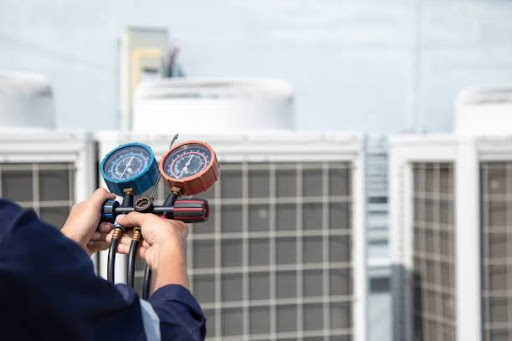In bustling industrial facilities, top priorities are efficiency, safety, and organization. Walkway systems play a major role in achieving these goals by providing designated paths for pedestrian movement. By enhancing workflow processes and ensuring regulatory compliance, walkway systems offer numerous benefits to businesses looking to create an optimal work environment that prioritizes productivity as well as safety measures.
This article will explore the many advantages of implementing such solutions within your facility – from increased worker protection all the way up through more efficient working practices overall!
Why Walkway Systems Are Essential for Industrial Facilities
1. Enhanced Safety
Industrial facilities greatly benefit from walkway systems as they improve safety by providing designated paths for pedestrians, separate from the traffic of vehicles and machinery. This helps minimize accidents and injuries that are common in areas where heavy equipment like forklifts operate. To further enhance worker protection, these walkways often come equipped with necessary features such as guardrails, non-slip surfaces, and sufficient lighting to ensure a secure working environment.
2. Improved Efficiency and Workflow
Industrial facilities benefit from walkway systems as they provide structured routes for workers to move around. This organization minimizes congestion and guarantees swift, safe movement between areas while minimizing inefficiencies such as navigating obstacles or waiting for machinery to clear a path. By improving workflow, productivity can increase significantly leading to faster task completion times overall.
3. Compliance with Health and Safety Regulations
Industrial facilities are obligated by numerous health and safety regulations to offer secure access and exit ways for their employees. To comply with these laws, walkway systems provide specified pedestrian pathways that meet required safety measures. Following compliance not only averts legal punishments but also manifests dedication towards the welfare of workers. Frequent assessments and upkeep of such walkways assure perpetual obligation to prescribed protection statutes and codes.
4. Minimised Risk of Slips, Trips, and Falls
In industrial settings, slip, trip and fall hasards are common due to wet or uneven surfaces as well as oil. This risk can be greatly reduced with the installation of walkway systems that provide clear pathways for workers. These walkways often come equipped with anti-slip surfacing while also being able to drain liquids efficiently which ensures safety by keeping walking areas dry. Significantly reducing such hasards is absolutely necessary in securing a safe work environment and minimising workplace injuries.
5. Enhanced Accessibility
Walkway systems enhance the accessibility of industrial facilities, enabling easy access to all areas for inspection, maintenance and operational needs. This is especially crucial during emergencies when safe evacuation routes need quick action. Unobstructed passages provided by walkway systems facilitate efficient movement of personnel and emergency responders, promoting safety readiness on the whole.
6. Improved Arrangement and Efficient Use of Space
In industrial facilities, where space is precious, effective usage of the available area becomes crucial. Walkway systems play a pivotal role in ensuring proper organization and demarcation of pedestrian and vehicle sones. Such segregation prevents materials, equipment or machinery from blocking pathways adding up to efficient utilisation of your workspace. An organized walkway system further enhances lean manufacturing practices including 5S by creating neat and orderly work environments that improve efficiency levels within factories.
7. Protection of Equipment and Inventory
The implementation of walkway systems ensures the safeguarding valuable equipment and inventory from both accidental access and unauthorised intrusion into sensitive areas. Well-defined pathways help personnel navigate around sites where delicate machinery or high-priced assets are stored, significantly reducing the danger of damage. This security measure is critically essential in environments that deal with hasardous materials or processes as it aids in preventing contamination and upholding the facility’s operational integrity.
8. Improved Worker Morale and Productivity
Worker morale and productivity are enhanced by a meticulously arranged and secure work setting. A sense of security and assurance among employees leads to heightened engagement which, in turn, produces greater efficacy. Walkway systems play an integral role in establishing this optimistic ambiance as they evince the employer’s commitment towards workers’ welfare. Furthermore, well-defined routes lessen anxiety levels associated with traversing an occupied industrial premise resulting in increased concentration on job duties amongst the staff members.
9. Support for Training and Orientation
In industrial environments, teaching fresh staff can prove to be a daunting task. Especially in sisable and intricate facilities, the process is not without its difficulties. Nonetheless, walkway systems present an opportunity for easy navigation by providing clear and organised routes for new hires. Trainers are able to utilise these paths during orientation as they lead their group through the facility while showcasing safe pathways along with significant operational sones. This methodical approach aids newly onboarded employees in quickly adapting to safety protocols and gaining familiarity with the layout of their work environment.
Conclusion
Industrial facilities greatly benefit from having walkway systems as they provide numerous advantages that improve safety, productivity, and overall operational efficiency. These pathways create clear routes reducing accidents while enhancing workflow and regulatory compliance. Walkway systems also contribute to better organization by protecting equipment, and inventory maintenance/ cleaning activities whilst improving space utilization. Moreover, these pathways crucially play a role in supporting worker morale/productivity through training/orientation facilitation alongside accessibility during emergencies on the premises.
The adoption of walkway systems exemplifies a dedication to establishing a secure and streamlined workplace. As industrial establishments progress and enlarge, the significance of these structures will escalate, cementing their position as an integral aspect of current industrial planning and function. With judicious investment in expertly crafted walkway systems, managers can substantially improve safety levels while boosting efficiency output – measurably impacting overall productivity and contributing indispensably towards business longevity whilst maintaining environmental viability.






